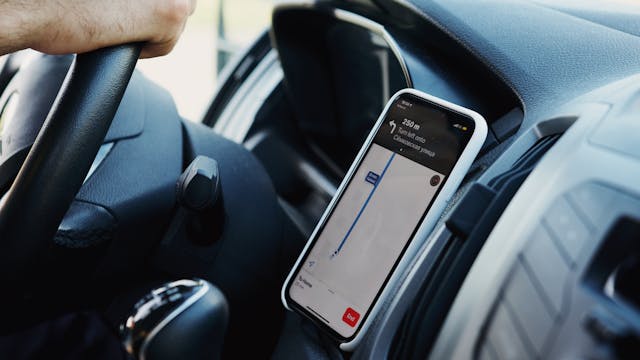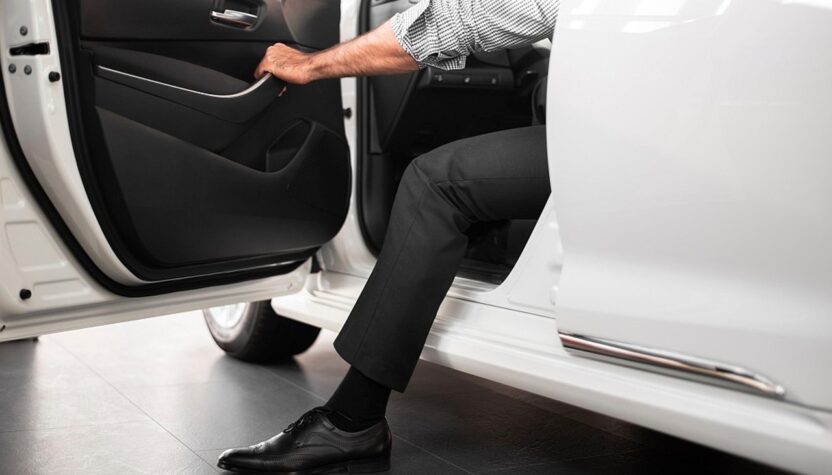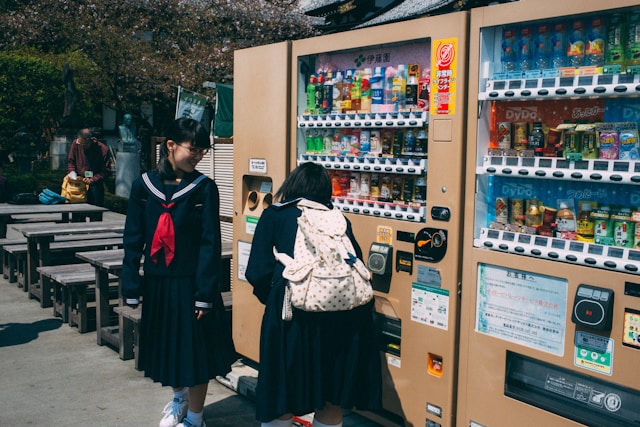Imagine stepping out of your home and summoning a ride with just a tap on your smartphone. In today’s fast-paced urban landscape, this convenience has become the norm rather than the exception. Ride-hailing services have transformed how we navigate our cities, offering more than just a quick lift from point A to point B. As urban centers grow and traffic congestion becomes an everyday challenge, the need for efficient transportation solutions has never been greater.
Ride-hailing isn’t just about getting where you need to go; it represents a shift in how we think about mobility itself. With technology at its core, these platforms are redefining convenience while addressing pressing issues like traffic jams and environmental concerns. Dive into the key benefits of ride-hailing and discover why it is poised to shape the future of urban transportation!
Convenience and On-Demand Access
Convenience is at the heart of ride-hailing services. Gone are the days of waiting for a bus or searching for a taxi. With just a few taps on your phone, your ride arrives within minutes. This on-demand access means you can travel whenever life calls. Whether it’s an early-morning meeting or a late-night outing, getting from one place to another has never been simpler. Ride-hailing apps provide real-time tracking, showing exactly when your driver will arrive. You won’t have to stand outside in the cold or rain anymore; you’ll know precisely when to step out. The ability to easily split fares with friends adds another layer of convenience. Sharing rides saves money and enhances social experiences by keeping everyone together throughout the journey.
Reduced Traffic Congestion
Ride-hailing services have the potential to reduce traffic congestion in urban areas significantly. These platforms encourage carpooling and ridesharing by offering a flexible alternative to personal vehicles. This maximizes vehicle occupancy and minimizes the number of cars on the roads. Moreover, ride-hailing apps utilize advanced algorithms to optimize routes. This means fewer drivers circling looking for parking or navigating through busy streets. As a result, travel times decrease, benefiting both users and public transport systems. The impact is especially noticeable during peak hours when traditional commuting methods often falter under pressure. With more people opting for rideshare options instead of driving alone, cities can experience smoother traffic flow overall. Less congestion translates into cleaner air, and fewer idling engines mean reduced emissions—an essential consideration for urban planning and sustainability efforts in the future.

Cost-Effectiveness for Users
Ride-hailing services have transformed how we think about transportation costs. With the ability to choose from various options, users can find rides that perfectly fit their budgets. Many platforms offer competitive pricing, often lower than traditional taxi services. Surge pricing during peak hours may seem daunting, but discounts and promotions frequently balance things out. This flexibility makes it easier for commuters to save money. Moreover, ridesharing eliminates hidden costs associated with car ownership. No need for parking fees or maintenance expenses; riders only pay for what they use. The convenience of app-based payment systems also enhances affordability. Users can track their spending in real time and manage their transport budget more effectively. For urban dwellers seeking a reliable yet economical way to navigate busy streets, ride-hailing presents an appealing solution that aligns with modern lifestyles.
Technology-Driven Safety Features
Ride-hailing services are transforming urban transportation, particularly with their focus …





 Setting a budget is the cornerstone of making smart financial purchases. Before you even think about hitting the mall or browsing online stores, take a moment to assess your finances. Determine how much money you can comfortably allocate towards your purchase without compromising your savings goals or essential expenses. Creating a budget doesn’t have to be complicated – jot down your monthly income and fixed costs. From there, decide on a reasonable amount that you’re willing to spend on non-essential items like clothes, gadgets, or dining out.
Setting a budget is the cornerstone of making smart financial purchases. Before you even think about hitting the mall or browsing online stores, take a moment to assess your finances. Determine how much money you can comfortably allocate towards your purchase without compromising your savings goals or essential expenses. Creating a budget doesn’t have to be complicated – jot down your monthly income and fixed costs. From there, decide on a reasonable amount that you’re willing to spend on non-essential items like clothes, gadgets, or dining out. When making financial purchases, it’s crucial to consider the long-term value of what you’re buying. Think beyond the immediate gratification and focus on how this purchase will benefit you in the future. Will it save you money over time? Will it provide lasting quality and durability? Choosing products that have a longer lifespan or offer ongoing benefits can save you money in the long run. Consider things like energy-efficient appliances that reduce utility bills or high-quality items that won’t need frequent replacements.
When making financial purchases, it’s crucial to consider the long-term value of what you’re buying. Think beyond the immediate gratification and focus on how this purchase will benefit you in the future. Will it save you money over time? Will it provide lasting quality and durability? Choosing products that have a longer lifespan or offer ongoing benefits can save you money in the long run. Consider things like energy-efficient appliances that reduce utility bills or high-quality items that won’t need frequent replacements.




 Packaging isn’t just about aesthetics. It’s a protective cocoon for the chocolate, preserving its flavor, texture, and quality. A well-designed wrapper not only attracts consumers but also ensures the chocolate arrives in perfect condition. Moreover, packaging plays a crucial role in extending the shelf life of chocolate bars, as it protects them from external factors such as humidity and temperature changes. Additionally, with the rise of e-commerce, sturdy packaging is now more important than ever to ensure that chocolate bars can withstand shipping and handling.
Packaging isn’t just about aesthetics. It’s a protective cocoon for the chocolate, preserving its flavor, texture, and quality. A well-designed wrapper not only attracts consumers but also ensures the chocolate arrives in perfect condition. Moreover, packaging plays a crucial role in extending the shelf life of chocolate bars, as it protects them from external factors such as humidity and temperature changes. Additionally, with the rise of e-commerce, sturdy packaging is now more important than ever to ensure that chocolate bars can withstand shipping and handling. Efficient packaging machines and techniques play a vital role not just in wrapping chocolate bars but also in preserving their essence and allure. From mass-produced delights to artisanal treasures, the perfect wrapper seals not just the chocolate but also the delight of the experience within. As technology evolves and sustainability takes center stage, the packaging of these beloved treats continues to evolve, promising both innovation and preservation for the delight of chocolate enthusiasts worldwide.…
Efficient packaging machines and techniques play a vital role not just in wrapping chocolate bars but also in preserving their essence and allure. From mass-produced delights to artisanal treasures, the perfect wrapper seals not just the chocolate but also the delight of the experience within. As technology evolves and sustainability takes center stage, the packaging of these beloved treats continues to evolve, promising both innovation and preservation for the delight of chocolate enthusiasts worldwide.…





 Sneakers have become a canvas for self-expression and personal style. With various designs, colors, and patterns available, individuals can choose sneakers that reflect their personality and make a statement. From classic white sneakers that exude minimalism and elegance to bold, vibrant kicks that demand attention, there’s a pair for every taste and preference. Sneakers allow people to express their individuality, break fashion norms, and create unique looks that set them apart from the crowd.
Sneakers have become a canvas for self-expression and personal style. With various designs, colors, and patterns available, individuals can choose sneakers that reflect their personality and make a statement. From classic white sneakers that exude minimalism and elegance to bold, vibrant kicks that demand attention, there’s a pair for every taste and preference. Sneakers allow people to express their individuality, break fashion norms, and create unique looks that set them apart from the crowd.
 When a customer enters your store, you want their eye to be immediately drawn to the merchandise. It is why it’s essential to have a focal point in your design. The focal point should be something that catches the eye and makes the customer want to explore further. It could be a display of new arrivals or a special sale section. For example, placing a giant Pikachu statue in the middle of your store would also work perfectly for any toy store. Your focal point doesn’t have to be limited to one area. You can have multiple focal points throughout the store.
When a customer enters your store, you want their eye to be immediately drawn to the merchandise. It is why it’s essential to have a focal point in your design. The focal point should be something that catches the eye and makes the customer want to explore further. It could be a display of new arrivals or a special sale section. For example, placing a giant Pikachu statue in the middle of your store would also work perfectly for any toy store. Your focal point doesn’t have to be limited to one area. You can have multiple focal points throughout the store. On top of that, you should also embrace your boldness and creativity in retail design. Be fearless in your choices, and don’t be afraid to experiment.
On top of that, you should also embrace your boldness and creativity in retail design. Be fearless in your choices, and don’t be afraid to experiment.
 One of the first steps you need to consider in this process is to understand whether you are working with a professional plumber or not. Checking their accreditation will help you know their status in this field. Also, going through their documents, you will know the kind of services they offer, which will help you make the right choice.
One of the first steps you need to consider in this process is to understand whether you are working with a professional plumber or not. Checking their accreditation will help you know their status in this field. Also, going through their documents, you will know the kind of services they offer, which will help you make the right choice. Finding a professional plumbing contractor for the first time can be a daunting task. However, you can make this process easy by getting recommendations from the people you trust. Your close friends and family members will refer you to some of the reputable plumbers they know in your region. Therefore, get the referrals, ask questions and decide.
Finding a professional plumbing contractor for the first time can be a daunting task. However, you can make this process easy by getting recommendations from the people you trust. Your close friends and family members will refer you to some of the reputable plumbers they know in your region. Therefore, get the referrals, ask questions and decide.
 First reason, Ibutamoren is an oral drug. It makes administering this compound way less intimidating than using SARMs. And although Ibutamoren is not without adverse side effects, people somehow take it as a safer alternative to SARMs and steroids.
First reason, Ibutamoren is an oral drug. It makes administering this compound way less intimidating than using SARMs. And although Ibutamoren is not without adverse side effects, people somehow take it as a safer alternative to SARMs and steroids. 



 Charter taxi service is conscious of time and will work to ensure that their clients are in the desired location at the right time. Using a cab ride is more convenient as it avoids driving hassles. Moreover, the chauffeurs have a great understanding of the city’s traffic, therefore; they use alternate routes to get their clients to their expected locations within the scheduled time.…
Charter taxi service is conscious of time and will work to ensure that their clients are in the desired location at the right time. Using a cab ride is more convenient as it avoids driving hassles. Moreover, the chauffeurs have a great understanding of the city’s traffic, therefore; they use alternate routes to get their clients to their expected locations within the scheduled time.…





 Make sure it is situated in an ideal place for your stay. Many prefer those that are located by the beach because of the beautiful environment and calm atmosphere. You also need to make sure that a specific luxury villa has all the facilities you need for your stay. It should have a swimming pool, gym, good kitchen, and laundry. The following are reasons why you should opt for a vacation rental instead of a five-star hotel.
Make sure it is situated in an ideal place for your stay. Many prefer those that are located by the beach because of the beautiful environment and calm atmosphere. You also need to make sure that a specific luxury villa has all the facilities you need for your stay. It should have a swimming pool, gym, good kitchen, and laundry. The following are reasons why you should opt for a vacation rental instead of a five-star hotel. they are furnished with the right seats, beds and also TV screens. They are also more spacious. You will find some that are stocked with both alcoholic and non-alcoholic drinks. One gets to enjoy a great view of the scenery around.…
they are furnished with the right seats, beds and also TV screens. They are also more spacious. You will find some that are stocked with both alcoholic and non-alcoholic drinks. One gets to enjoy a great view of the scenery around.…
 This is one of the primary reasons why you need to purchase this tool. Jigsaws are straightforward and easy to use even though you have high experience level. You are only required to insert the blade, and you are ready to commence cutting. If it is a cordless jigsaw, you will add a battery together with a saw blade, and you are ready to go. These tools can be used in workshop regardless of the size because they do not take up much space.
This is one of the primary reasons why you need to purchase this tool. Jigsaws are straightforward and easy to use even though you have high experience level. You are only required to insert the blade, and you are ready to commence cutting. If it is a cordless jigsaw, you will add a battery together with a saw blade, and you are ready to go. These tools can be used in workshop regardless of the size because they do not take up much space. If you need to make bevel cuts, a jigsaw is one of the best tools you need to rely on. This is because most of the best jigsaw can be angled up to 45 degrees to make bevel cuts. Therefore, do not be stressed on how to make such cuts because, with a jigsaw, you can look for a lever that is above the shoe of your saw. After you have released it, then the saw will tilt to one side, and then you are supposed to pull the lever back to its usual place. By doing this, you will make a bevel cut.…
If you need to make bevel cuts, a jigsaw is one of the best tools you need to rely on. This is because most of the best jigsaw can be angled up to 45 degrees to make bevel cuts. Therefore, do not be stressed on how to make such cuts because, with a jigsaw, you can look for a lever that is above the shoe of your saw. After you have released it, then the saw will tilt to one side, and then you are supposed to pull the lever back to its usual place. By doing this, you will make a bevel cut.…

 Consistency and Perseverance
Consistency and Perseverance
 The worst thing that you can do is to make your own assumption, and it is the wrong one. And the surest way you can find out what is happening is by investigating to look for proofs. But doing this kind of things is not something that anyone can do, you need a professional that can quietly follow your partner and take pictures without getting themselves caught and blowing the whole plan. Since asking your significant other is not an option because they might lie, contact Cutty Investigations and ask them to find you the truth instead.
The worst thing that you can do is to make your own assumption, and it is the wrong one. And the surest way you can find out what is happening is by investigating to look for proofs. But doing this kind of things is not something that anyone can do, you need a professional that can quietly follow your partner and take pictures without getting themselves caught and blowing the whole plan. Since asking your significant other is not an option because they might lie, contact Cutty Investigations and ask them to find you the truth instead. There are many ways that you can stalk him, and it will be great if you can know the password of your partner’s account. But if you do not have any access to that information, start from the social media that he uses the most. If it is Instagram that he regularly uses, use the feature that can tell what the person that you follow do on the application. The pictures that he likes a lot might give you a clue, also dig in his follower or followings to see if there is someone fishy.
There are many ways that you can stalk him, and it will be great if you can know the password of your partner’s account. But if you do not have any access to that information, start from the social media that he uses the most. If it is Instagram that he regularly uses, use the feature that can tell what the person that you follow do on the application. The pictures that he likes a lot might give you a clue, also dig in his follower or followings to see if there is someone fishy.
 When it comes to the size, you first need to consider if you are using the bag as checked luggage or carry-on suitcase. This will have a tremendous result on the size that will work well with you. A perfect approach to make sure you find the correct sized bag is to find out in the airline online platforms you frequently use. Usually, your carrier should have their own checked luggage, and carry-on limitations are given. You might wish to take a small copy according to your airline because nowadays many take a crackdown on the luggage permit these days.
When it comes to the size, you first need to consider if you are using the bag as checked luggage or carry-on suitcase. This will have a tremendous result on the size that will work well with you. A perfect approach to make sure you find the correct sized bag is to find out in the airline online platforms you frequently use. Usually, your carrier should have their own checked luggage, and carry-on limitations are given. You might wish to take a small copy according to your airline because nowadays many take a crackdown on the luggage permit these days. The ordinary world and people, when it comes to cost we all have that feeling of saving money and a strong attraction to cheap products. They let us save yes, but in turn, they give us poor quality, as they say, you get what you pay for. For a perfect and the best suitcase you need to have some extra dig in your pocket. A durable and a sturdy bag is an excellent investment for years of use than a take cheap brand. I am not advocating for expensive brands no, what I simply mean is that cheap will suit your pocket, yes, but, you will find yourself replacing the same more frequently than you anticipated. You can also check out samsonite suitcase reviews for more information.…
The ordinary world and people, when it comes to cost we all have that feeling of saving money and a strong attraction to cheap products. They let us save yes, but in turn, they give us poor quality, as they say, you get what you pay for. For a perfect and the best suitcase you need to have some extra dig in your pocket. A durable and a sturdy bag is an excellent investment for years of use than a take cheap brand. I am not advocating for expensive brands no, what I simply mean is that cheap will suit your pocket, yes, but, you will find yourself replacing the same more frequently than you anticipated. You can also check out samsonite suitcase reviews for more information.…




